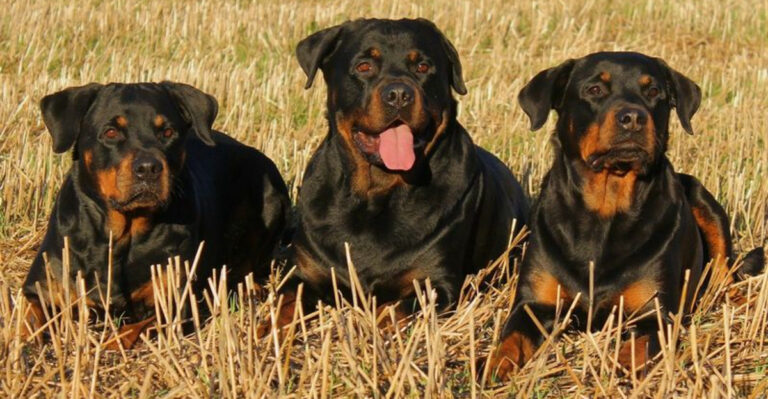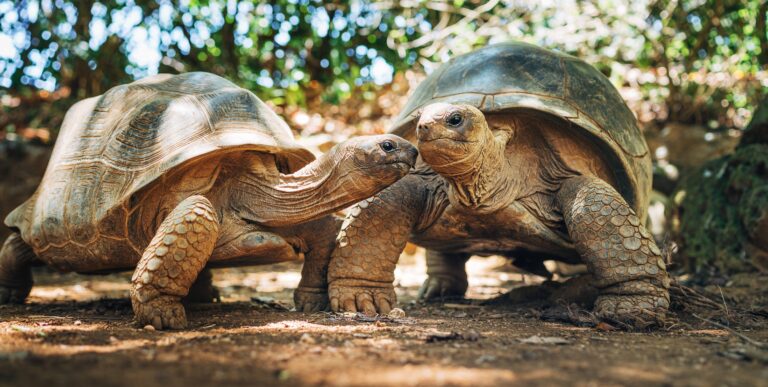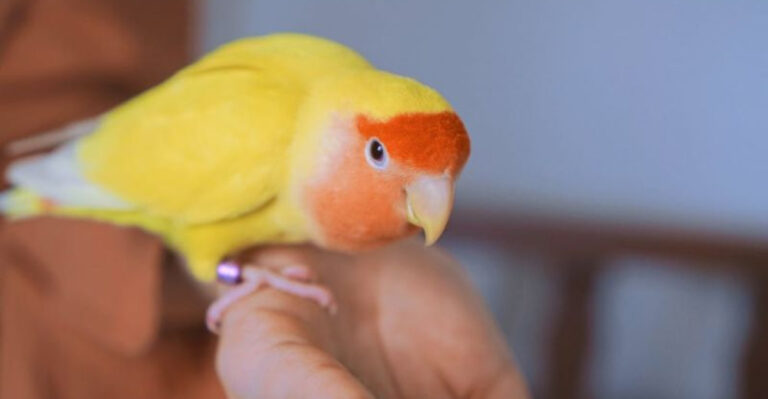22 Black Birds With Yellow Beaks: How To Properly Identify Each Kind
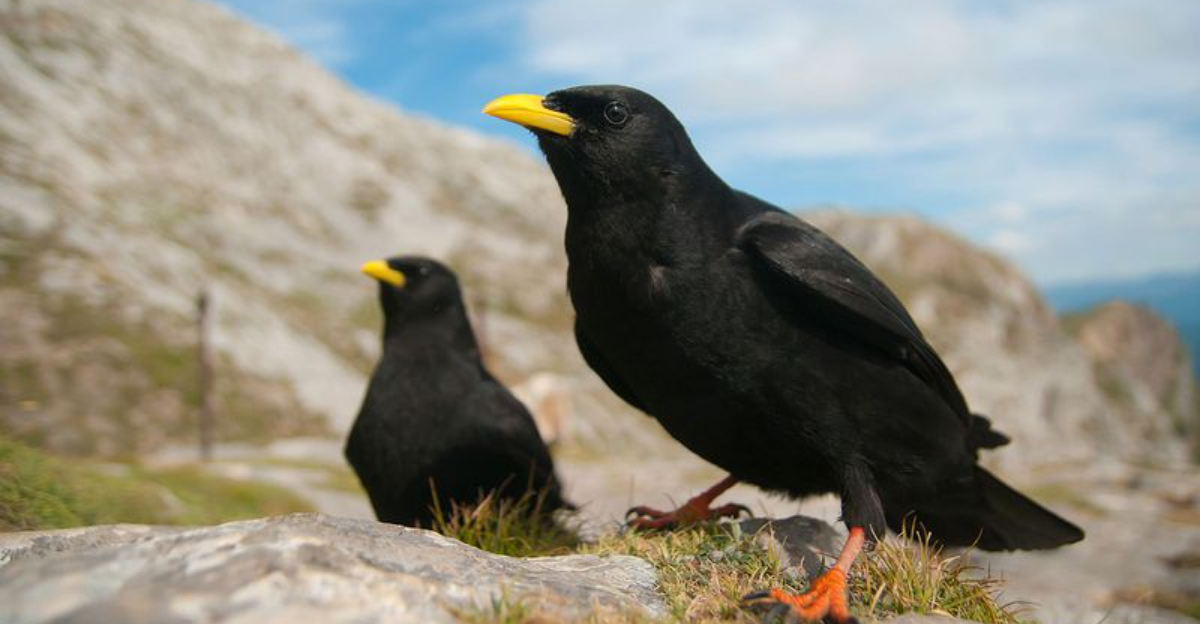
Ever spotted a dark-feathered bird with a splash of yellow on its beak and wondered what species you’re looking at?
Black birds with yellow beaks can be found across many habitats worldwide, from forests to urban areas. Learning to identify these striking birds can transform an ordinary nature walk into an exciting treasure hunt for feathered friends.
1. Common Blackbird

One of Europe’s most familiar songbirds sports a distinctive bright orange-yellow bill that contrasts beautifully against its coal-black plumage. Males showcase the classic all-black look, while females wear a more subtle brown coat.
Listen for their melodious flute-like song in gardens and woodlands. These adaptable birds thrive in urban environments too, often seen hopping across lawns hunting for worms and insects.
2. Alpine Chough
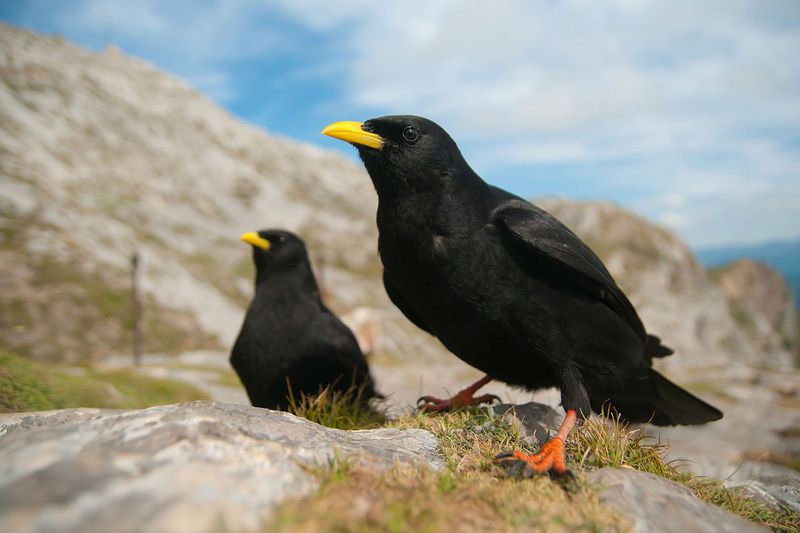
Soaring high above mountain peaks, these aerial acrobats cut striking figures against snowy backdrops. Their curved yellow bills gleam like tiny beacons against glossy black feathers as they perform impressive flying displays.
Mountain climbers often encounter these curious birds at high elevations. Unlike their lowland relatives, Alpine Choughs have adapted to life in harsh mountain environments, nesting on cliff faces and foraging in alpine meadows.
3. Yellow-billed Chough
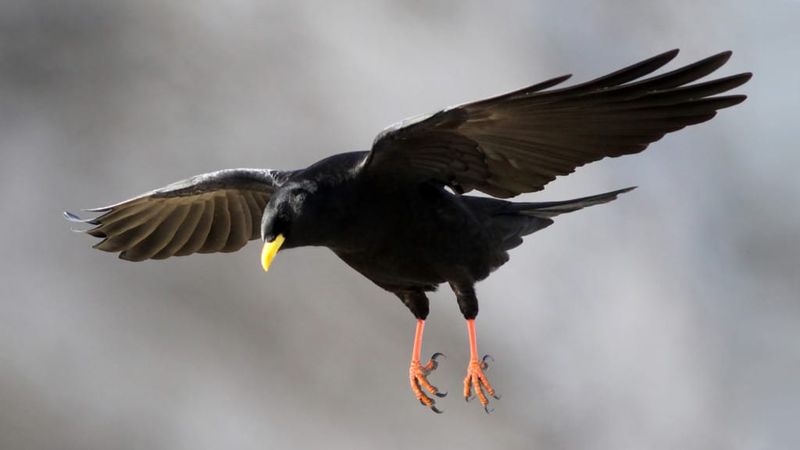
Graceful dancers of the air, these birds perform synchronized flying routines that leave observers mesmerized. Their slender, curved yellow bills shine against jet-black plumage as they ride thermal currents with apparent joy.
Found across mountainous regions of Europe and Asia, these social creatures typically travel in noisy groups. Their distinctive calls echo off rocky slopes while they search for insects, berries, and occasionally steal picnic leftovers from unsuspecting hikers.
4. European Starling

Notorious for their murmurations—massive, swirling flocks that paint living patterns across twilight skies. During breeding season, their normally dark bills transform into bright yellow, contrasting dramatically with their iridescent black feathers that shimmer with purples and greens.
Master mimics, these birds can imitate sounds ranging from car alarms to human speech. Originally introduced to North America by Shakespeare enthusiasts, they’ve since become one of the continent’s most abundant birds.
5. Yellow-billed Magpie
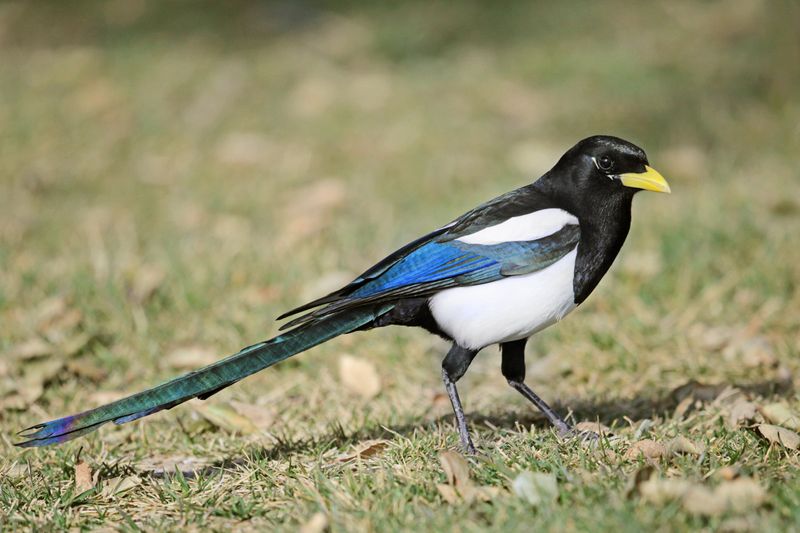
Found exclusively in California’s central valleys and coastal ranges, these striking birds are living jewels of the West Coast. Their long, bright yellow bills and distinctive black-and-white patterning make them impossible to confuse with other species.
Family-oriented birds, they live in tight-knit groups and build large, domed nests in oak trees. Unlike their more widespread black-billed cousins, these California natives face conservation challenges due to their limited range and vulnerability to West Nile virus.
6. Eurasian Blackbird
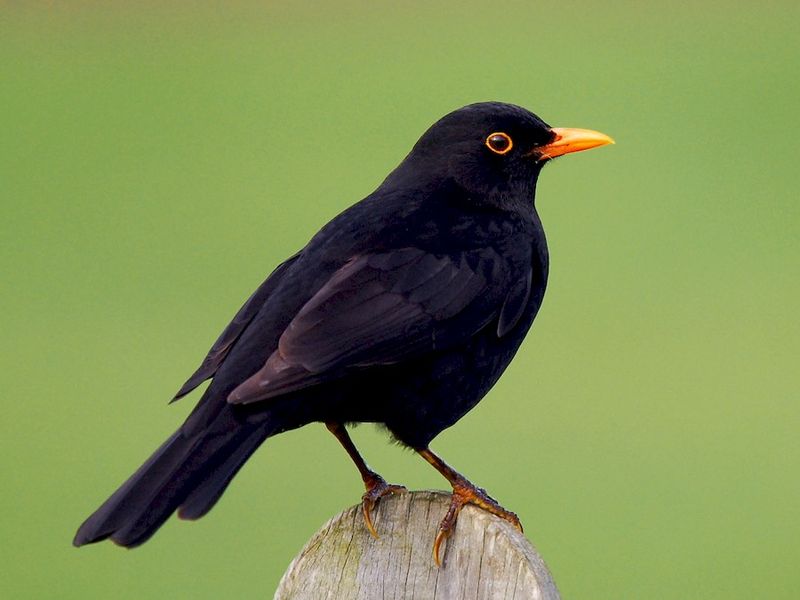
Featured in nursery rhymes and classical music, these garden favorites enchant with their rich, flute-like dawn chorus. Males sport eye-catching yellow eye-rings that complement their bright bills against velvet-black plumage.
Surprisingly unrelated to American blackbirds, they’re actually members of the thrush family. Early risers might catch them pulling earthworms from dewy lawns or defending their territories with passionate songs from prominent perches in trees and bushes.
7. Yellow-billed Loon
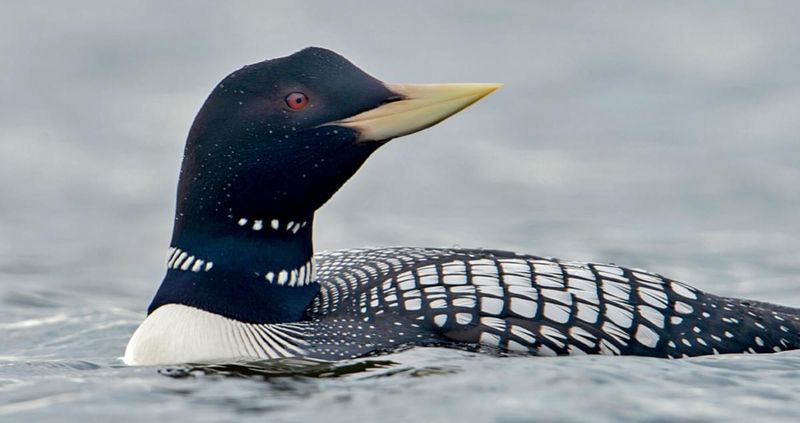
Arctic jewels with haunting calls that echo across northern lakes, these majestic waterbirds wear formal-looking black-and-white checkered patterns. Their pale yellow dagger-like bills stand out against their dark heads as they glide across remote wilderness waters.
Rare visitors to the lower 48 states, these birds breed in the Arctic tundra. Expert divers, they can plunge to surprising depths, propelling themselves with powerful feet to catch fish in cold northern waters.
8. Wattled Starling
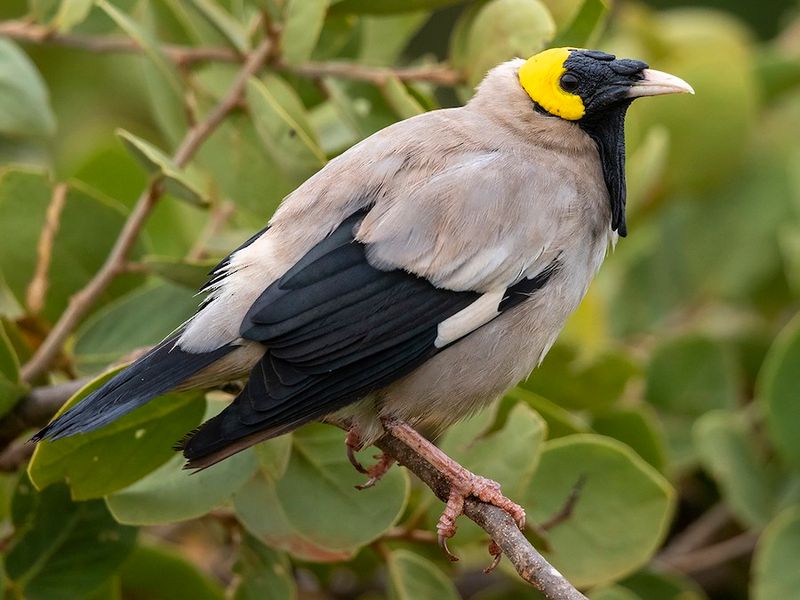
Strange facial decorations make these African birds look like they’re wearing carnival masks. During breeding season, males develop yellow wattles (fleshy lobes) that hang from their faces alongside their bright yellow bills, creating a bizarre contrast against their black feathers.
Cattle’s best friends, these birds often follow large mammals across African savannas. They snatch up insects disturbed by grazing herds and sometimes perch directly on buffalo or elephants to catch flies bothering these massive animals.
9. Tristram’s Starling
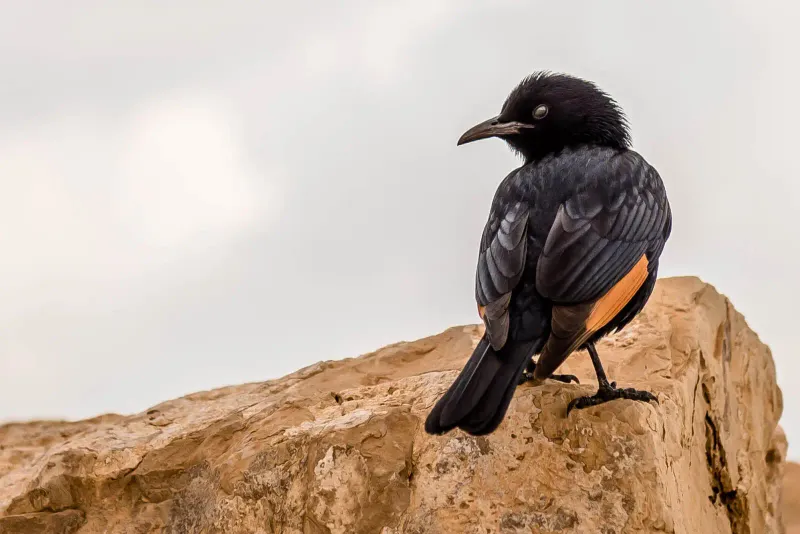
Desert specialists with a flair for dramatic landscapes, these Middle Eastern birds cut striking silhouettes against ancient ruins and rocky outcrops. Their glossy black plumage and bright yellow bills have witnessed centuries of human history in the Holy Land.
Perfectly adapted to arid environments, they can survive with minimal water. Often seen around tourist sites in Israel and Jordan, these opportunistic feeders have learned to scavenge food scraps from visitors, sometimes boldly approaching outdoor dining areas.
10. Black Myna
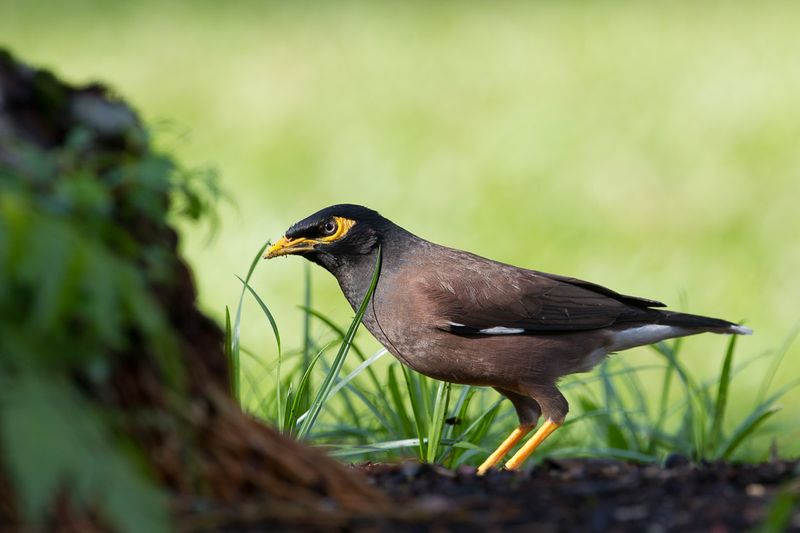
Feathered comedians of Southeast Asian cities, their raucous calls and yellow facial patches brighten urban landscapes from India to Indonesia. Their bright yellow bills and eye patches create a masked appearance against their glossy black bodies.
Talented vocal mimics, they can learn to repeat human phrases with surprising clarity. Highly intelligent and adaptable, these birds thrive in bustling cities, building nests in buildings and feeding on everything from fruits to street food scraps.
11. Great-tailed Grackle
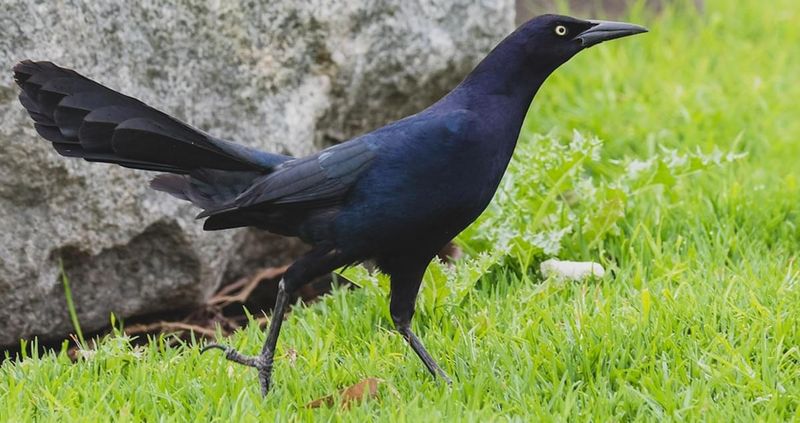
Swagger defines these confident birds with boat-shaped tails that seem too large for their bodies. Males flash iridescent black feathers while sporting pale yellow bills during breeding season, strutting around parking lots like feathered rock stars.
Masters of adaptation, they’ve expanded their range dramatically northward in recent decades. Their vocal repertoire includes whistles, croaks, and strange mechanical sounds that fill shopping centers and fast-food parking lots across the American Southwest.
12. Yellow-faced Myna

Fancy facial markings give these birds the appearance of wearing elaborate yellow makeup against their dark plumage. Their bright yellow bills and distinctive face patches create a striking contrast against their otherwise black bodies.
Native to Southeast Asian forests, they’ve become increasingly rare due to habitat loss. Highly sought after in the pet trade for their vocal abilities, wild populations face additional pressure from trappers seeking to capture these charismatic birds.
13. Yellow-billed Oxpecker
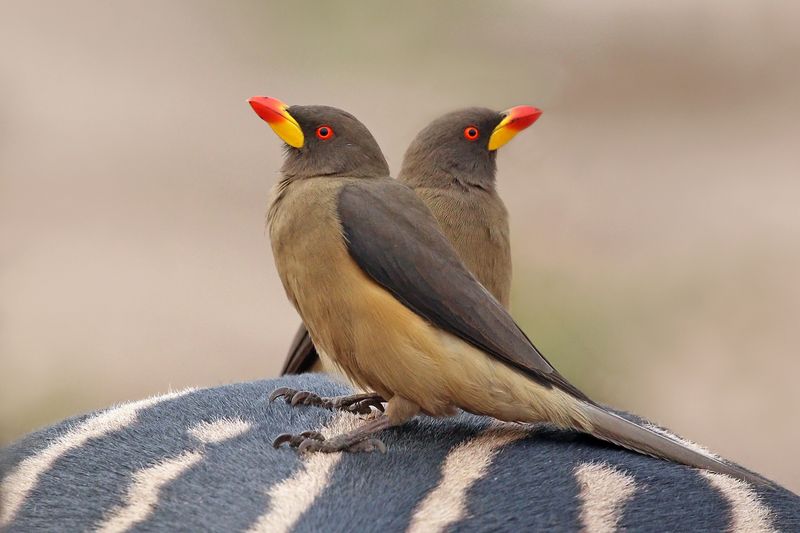
Nature’s wildlife groomers perch directly on rhinos, buffalo, and giraffes across African savannas. Their bright yellow bills are specially adapted for plucking ticks and parasites from the skin of large mammals, forming a remarkable cleaning partnership.
Watch wildlife documentaries closely and you’ll spot these birds riding atop Africa’s most iconic animals. Though mostly beneficial, they sometimes peck at existing wounds, behavior that has earned them a complicated reputation among wildlife conservationists studying their relationship with host animals.
14. Common Hill Myna
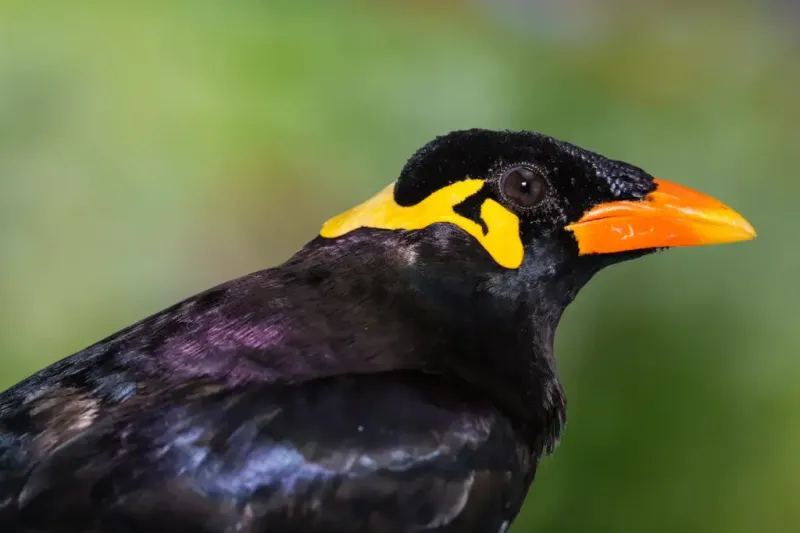
Famous for their extraordinary ability to mimic human speech with remarkable clarity and intonation. Their glossy black feathers contrast sharply with bright yellow wattles and bills, making them among the most distinctive-looking birds in Asian forests.
Prized as pets throughout history, wild populations have declined in many areas. Their complex vocalizations include an impressive repertoire of whistles, screeches, and calls that echo through tropical forests from India to Indonesia.
15. Yellow-billed Stork
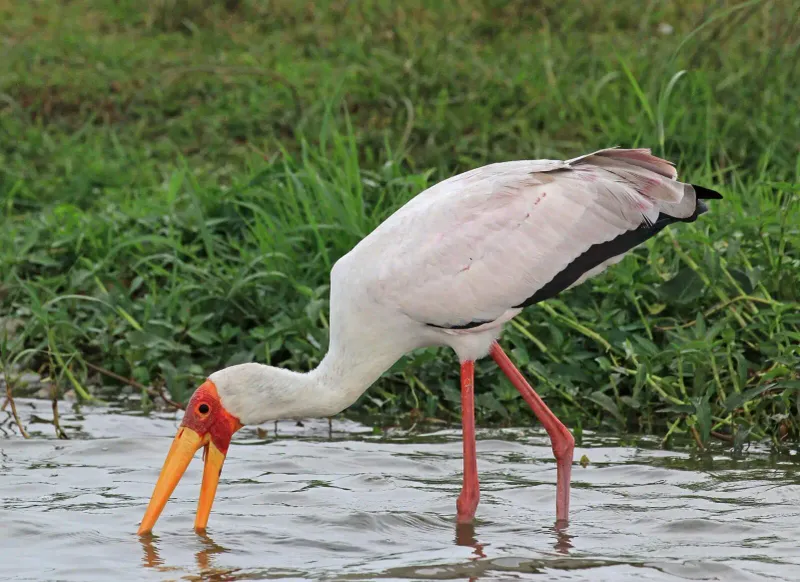
Wading through shallow African waters on stilt-like legs, these elegant birds cut impressive figures against savanna landscapes. Their bright yellow bills curve slightly downward, contrasting beautifully with their predominantly black and white plumage.
Masters of patient fishing, they employ a unique hunting technique. Standing motionless in water, they keep their bills partially open underwater until prey touches them, triggering a lightning-fast snap reflex that captures fish before they can escape.
16. Yellow-billed Shrike

Nicknamed “butcher birds” for their habit of impaling prey on thorns or barbed wire to create macabre larders. Their hooked yellow bills are perfect tools for tearing apart insects and small vertebrates, standing out vividly against their black-and-white plumage.
Found across African savannas and woodlands, these birds are accomplished hunters. Perched conspicuously on exposed branches, they scan the ground below with keen eyes before swooping down to capture grasshoppers, lizards, and occasionally even small birds.
17. Pied Myna

Fashion-forward birds sporting a striking black-and-white color scheme complemented by bright yellow bills and eye patches. Their bold patterning makes them stand out even in busy Asian city centers where they’ve adapted to urban living.
Social butterflies of the bird world, they gather in noisy flocks that chatter constantly. Originally forest dwellers, they’ve successfully colonized cities across Southeast Asia, building messy nests in street lights and feasting on everything from fruits to discarded human food.
18. Bali Myna
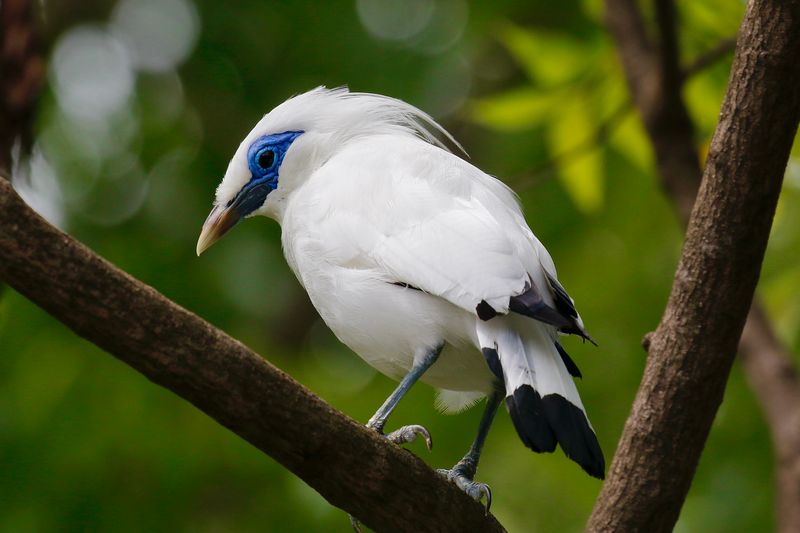
Critically endangered living treasures found only on a single Indonesian island. Their snow-white plumage makes their bright yellow bills and striking blue eye patches even more dramatic, creating one of the most beautiful birds in the world.
Cultural icons in Bali, these birds face a precarious future. With fewer than 100 individuals remaining in the wild due to habitat loss and illegal trapping for the pet trade, conservation efforts focus on breeding programs and protected reserves to save this island jewel.
19. Yellow-billed Spoonbill
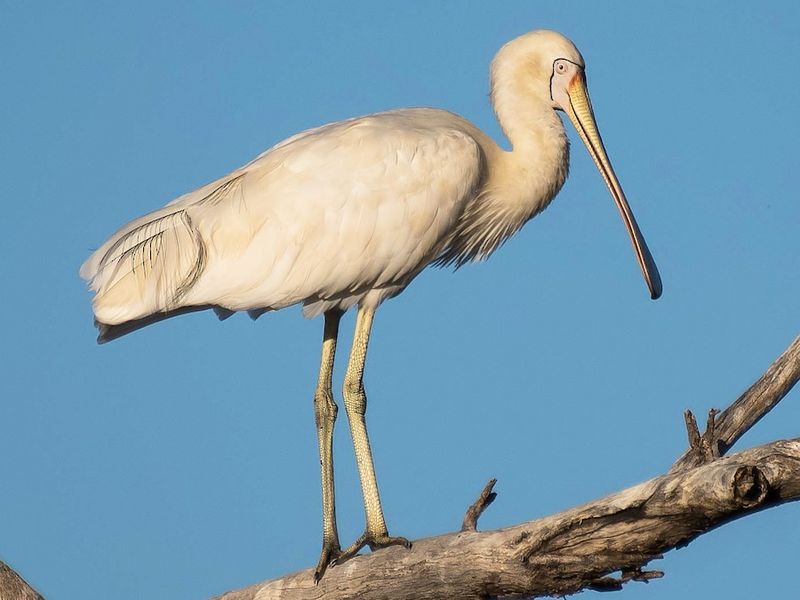
Wielding bills shaped like kitchen utensils, these unusual waterbirds sweep their flattened yellow beaks side-to-side through shallow water. Their spoon-shaped bills contain sensitive nerve endings that detect tiny movements of aquatic prey in murky waters.
Australian wetland specialists, they create quite a sight when feeding in groups. Their deliberate, methodical feeding technique contrasts with their awkward appearance – gangly birds with black legs, white bodies, and those extraordinary yellow spatulate bills that give them their descriptive name.
20. Yellow-billed Cardinal

Flamboyant South American birds wearing what looks like bright red mohawk hairstyles. Their crimson crests and faces contrast dramatically with white underparts, gray backs, and the bright yellow bills that give them their name.
Unlike their northern relatives, these cardinals prefer wetland edges and river margins. Commonly seen in the Pantanal region of Brazil and neighboring countries, they often forage in small groups, picking seeds from grasses and occasionally snatching insects from the water’s surface.
21. White-necked Myna
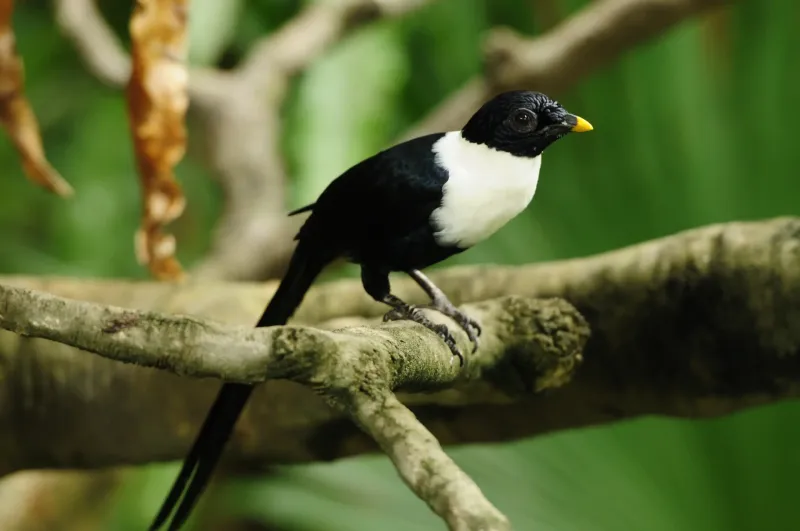
Fancy dressed birds with tuxedo-like plumage featuring glossy black bodies interrupted by crisp white neck patches. Their bright yellow bills and eye wattles add splashes of color to their otherwise formal black-and-white attire.
Found across Southeast Asian forests and increasingly in urban areas. Highly social, these birds often travel in noisy flocks, communicating with a variety of whistles and calls as they search for fruits, berries, and insects among forest canopies or city parks.
22. Spotless Starling
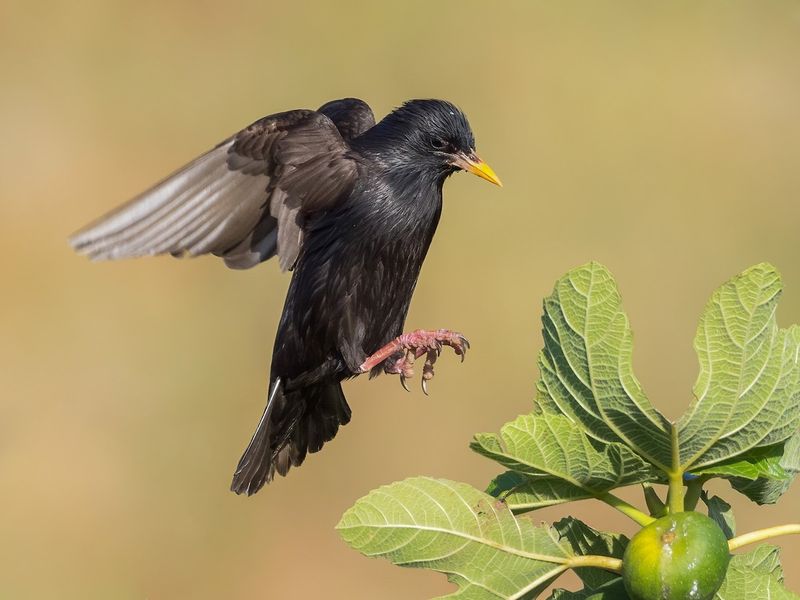
Mediterranean specialists that shimmer with iridescent purples and greens despite their misleading name. During breeding season, males develop bright yellow bills that contrast beautifully with their glossy dark plumage that appears black at first glance.
Ancient companions to human civilization, they’ve nested in Roman ruins and medieval castles for centuries. Their beautiful whistling songs echo through Spanish olive groves and Italian piazzas as they gather in large, chattering flocks that perform synchronized aerial ballets at dusk.

